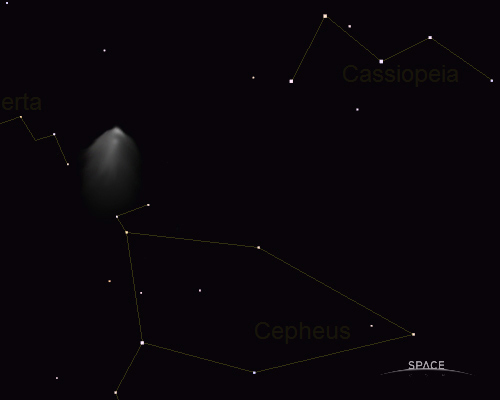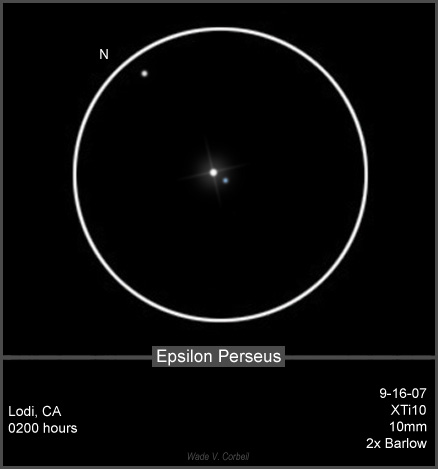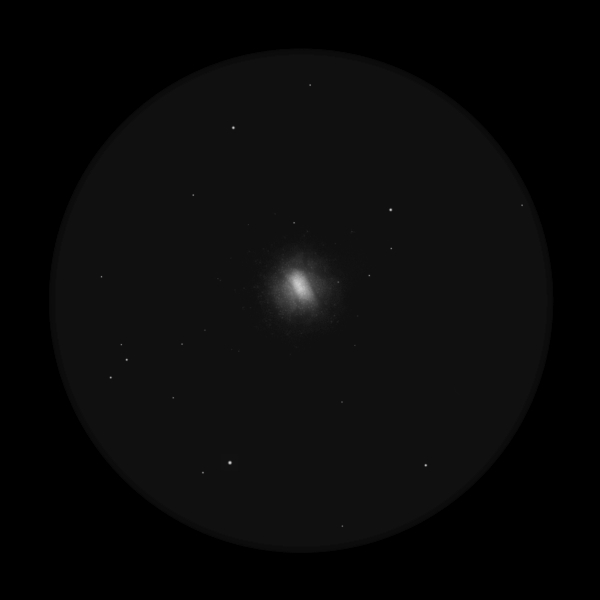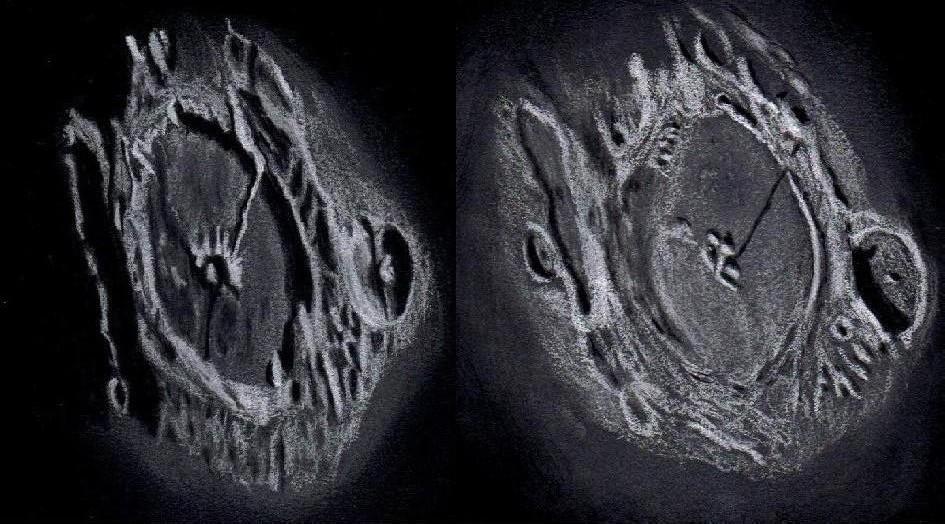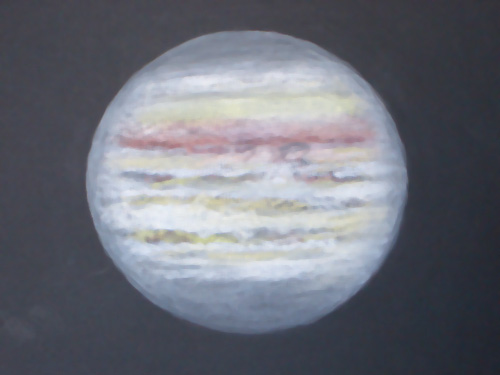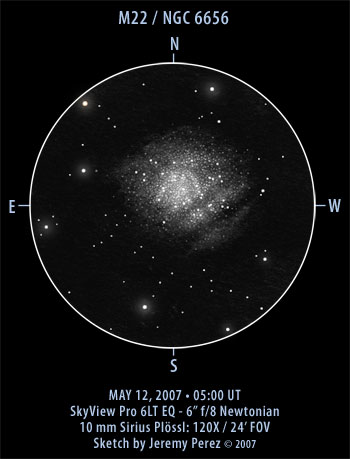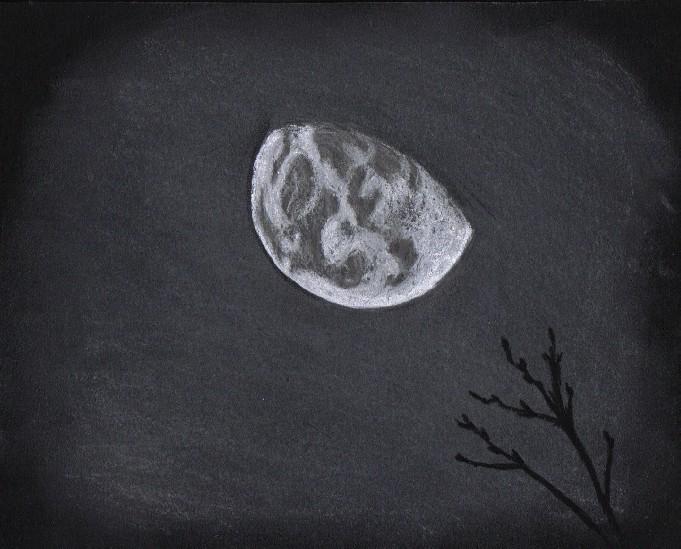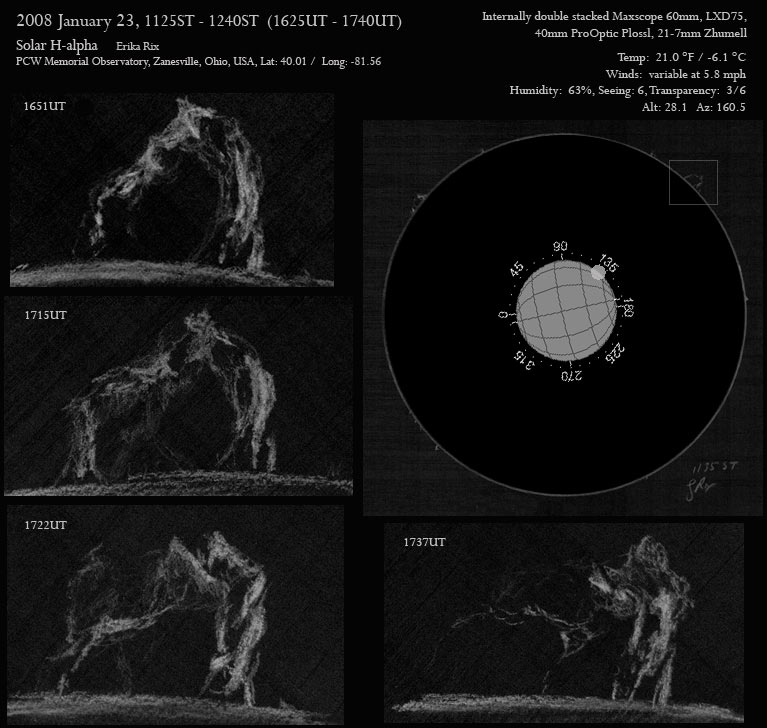
Solar prominences, January 23rd, 2008 1125ST -1240ST (1625UT – 1740UT)
By Erika Rix
2008 01 23, 1125ST -1240ST (1625UT – 1740UT)
Solar H-alpha
PCW Memorial Observatory, Zanesville, Ohio, USA, Lat: 40.01 / Long: -81.56
Erika Rix
Temp: 21.0 °F / -6.1 °C
Winds: variable at 5.8 mph
Humidity: 63%
Seeing: 6/6
Transparency: 3/6
Alt: 28.1 Az: 160.5
Equipment:
Internally double stacked Maxscope 60mm, LXD75, 40mm ProOptic Plossl, 21-7mm Zhumell
Sketch Media:
Black Strathmore Artagain paper, white Conte’ and Prang pencils, white vinyl eraser.
Added -30 brightness, +9 contrast after scanning. Tilting Sun program used for
digital Sun insert.
The NE and the SE limbs continue to put on a display for us. I didn’t get a chance
to observe yesterday for all the overcast and light snowfall, but over the past
several days’ observations, it’s been very interesting to watch the changes and
compare observations.
The solar disk had long u-shaped very thin filament looking lines reaching almost
from the SE limb to the inward 1/4th of the disk. The opening of “u” was facing
outward toward the large prominence on that area of the limb. This was the
prominence that I concentrated on today for a sequence that spanned only about 45
minutes’ time. Funny, it seemed much longer than that, and as much as it changed in
that time frame, I would have expected it to have been longer as well. Seeing was
terrific, but transparency was only average with moments of excellent clarity as
well as an orange haze all around the disk in my FOV.
Differences in the first two sketches almost alarmed me and I worried that I had
made one too compact width wise and the other too spread out. There’s a chance that
I may have indeed done that, although as a sketcher, I try to make my sketches as
true to my observations as I possibly can. Once I recorded the last two, though, I
could see the movement of the prominence indeed spreading out, getting fainter to
the eastern side of it with each sketch. It was almost as if that side of the
prominence was getting weaker and losing structure. I would have loved to stay out
all day to record this.
The NE prominence was not quite as tall as the SE prominence, but it was easier to
view, although I did have to adjust the outside etalon as there was quite a
difference between the two prominences for best bandwidth viewing. I normally tweak
as many things as I can with the scope to tease out details in my observations, but
I normally don’t have to adjust the etalon that much between different prominences.
I observed 8 different areas of prominences around the limb total.



